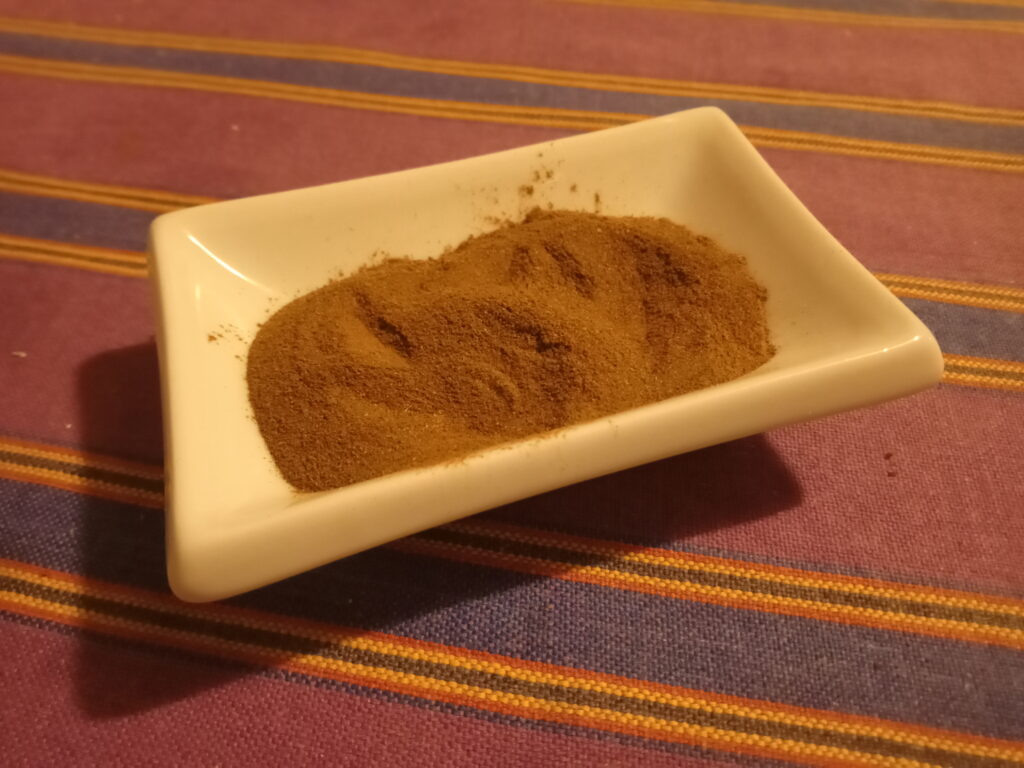


Cinnamon Treatment for Black Mould Exposure
I successfully had cinnamon treatment for black mould exposure in 2021. Diagnosed with asthma in my early teens, through diet and lifestyle and acupuncture treatment, I have managed to minimise its impact. In order to be responsible, I also always carry an inhaler on me, which I use before strenuous cardio exercise or when exposure to an irritant causes shortness of breath.
I occasionally get periods when my asthma flares up worse than usual. In autumn 2021, as the weather became damper and the windows in my home were no longer flung open all the time as they had been during the summer, I began to experience shortness of breath quite frequently. Given the ongoing covid pandemic, I was rather concerned when this lasted longer than such episodes normally do. Two months after my symptoms begun, they were still there and actually getting worse.

With my medical investigator hat on, I finally realised that my symptoms seemed to be worse when I was at home, and then I noted that being in one room seemed to trigger them. I further worked out that being at one end of that room was the single biggest trigger. I checked a full-length water-heater cupboard at the end of that room and found it was thick with black mould on multiple surfaces. I had been aware that there was usually a small amount in there, but I had never seen anything approaching this much before.
It was through discussing this with a Chinese herbalist friend that I learnt of cinnamon treatment for black mould exposure. She told me that she had read some pretty definitive papers on this and that there was significant clinical evidence. She prescribed me a herbal formula for twenty days, of which cinnamon was a major ingredient.
Happily it worked. Being a bit of a belt-and-braces type of person, I also took the advice of the asthma nurse at my GP surgery and agreed to also start using a preventative asthma inhaler for a couple of months to help to reverse the inflammation that the mould had already caused in my airways. Needless to say, I also decked myself out in protective gear – who didn’t have a spare face mask around in autumn 2021? – and thoroughly got rid of all the mould and took steps to prevent it returning.)
Looking at wider applications for cinnamon treatment for black mould exposure, I have gone on to discover that good quality cinnamon oil can be very effective in an environment where there may be mould to counter any symptoms in the vulnerable and, apparently, even to directly combat the black mould itself.
I also make sure I use culinary cinnamon more regularly now, sprinkling it on hot porridge at the breakfast table.
However, it is important to remember when thinking about cinnamon treatment for black mould exposure or for its other beneficial properties that large regular amounts of cinnamon can be toxic to the liver. There was a bit of an outcry in Denmark in 2013 when health officials released this advice, much to the dismay of the purveyors of the national pastry delicacy! So cinnamon can be consumed for its many health benefits and for its delicious flavour in certain recipes but not in excess. Anybody genuinely concerned about the maximum they should regularly consume should check this out.
While this article is primarily sharing my own positive experience with cinnamon treatment for black mould exposure, anybody who wishes to find out some more on the subject should be able to find some interesting research papers that will go into more specific advice concerning dosage and also the suitability of different species of commonly-cultivated cinnamon.
As a starting point in learning more about cinnamon treatment for black mould exposure and its other potential health benefits, read this.
To find out a bit more about aspects of traditional Chinese dietary therapy, click here.


